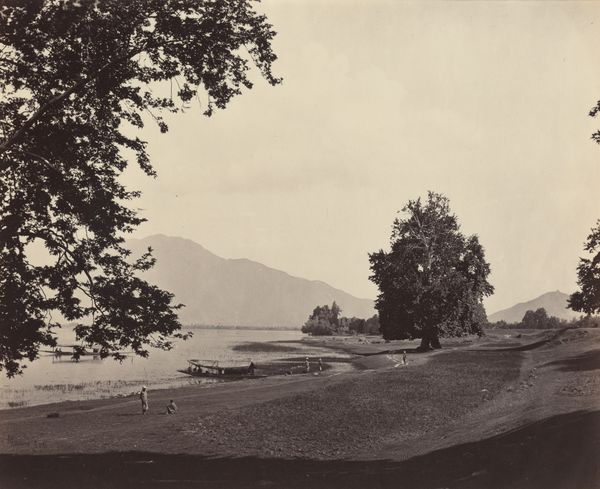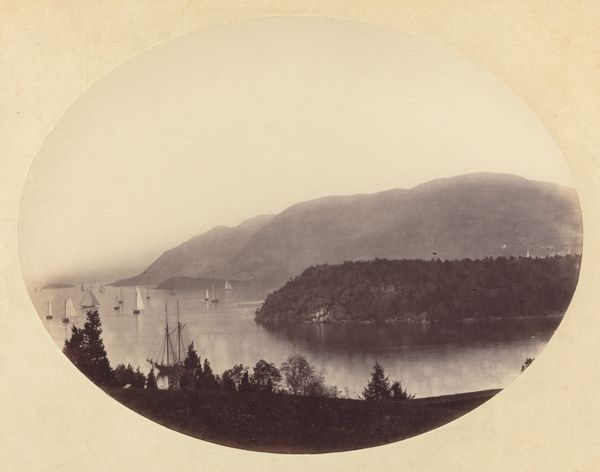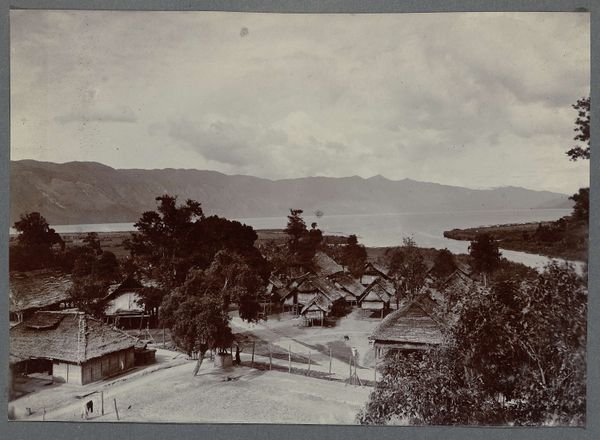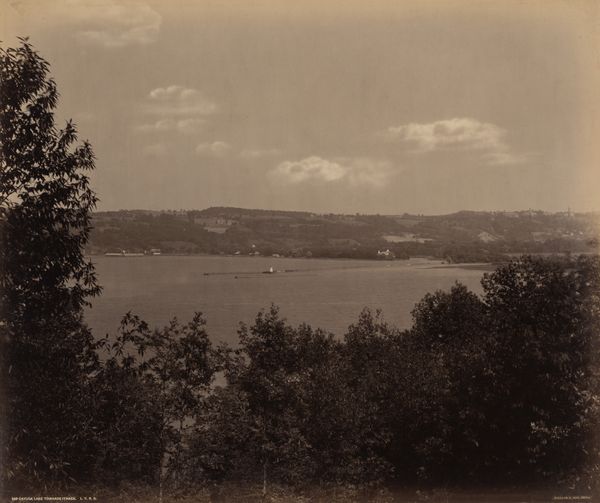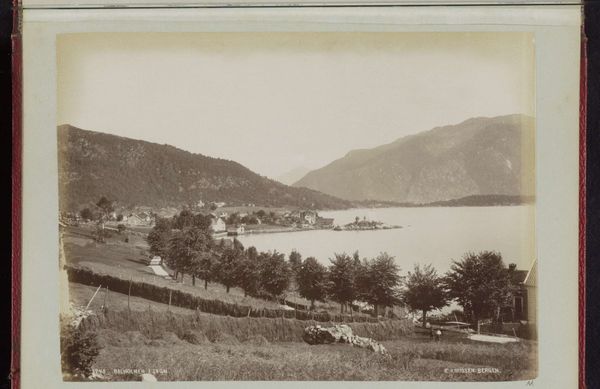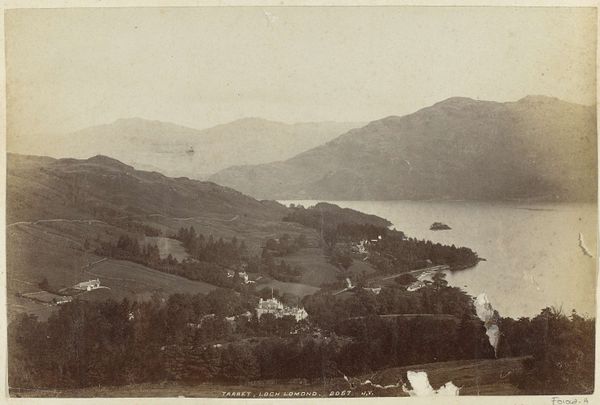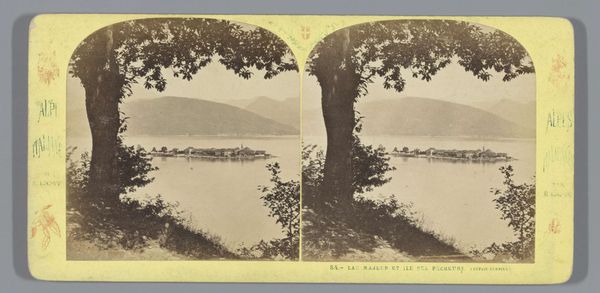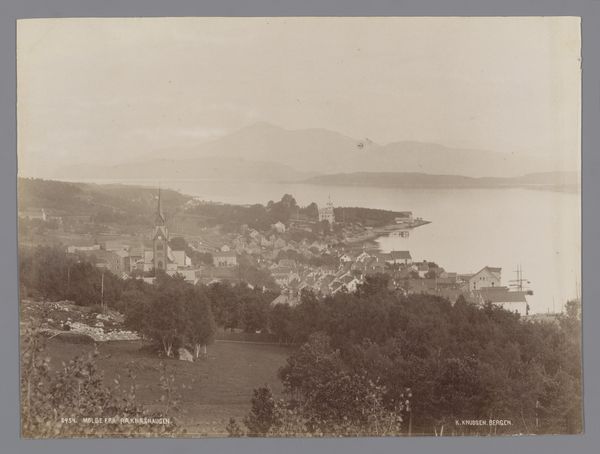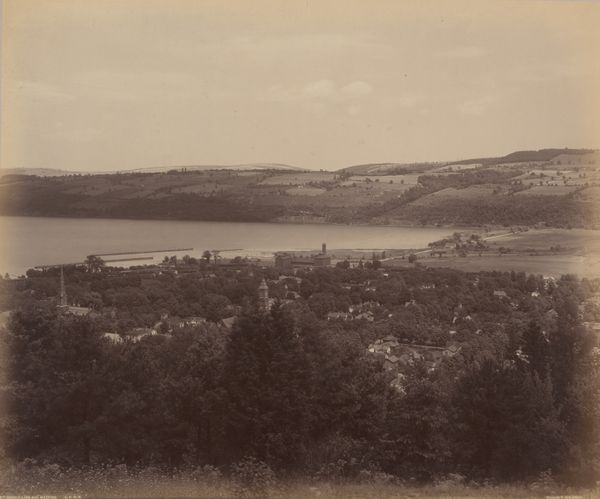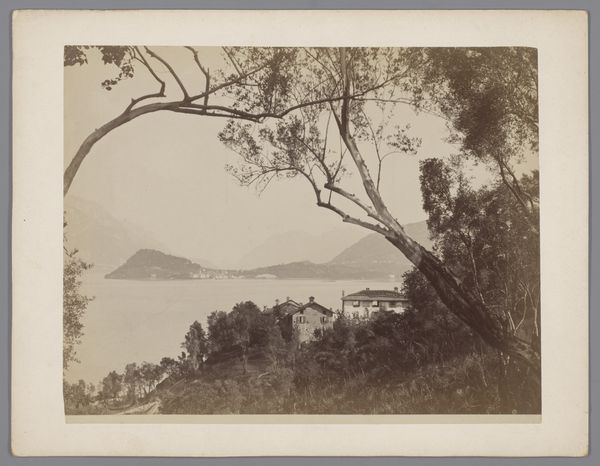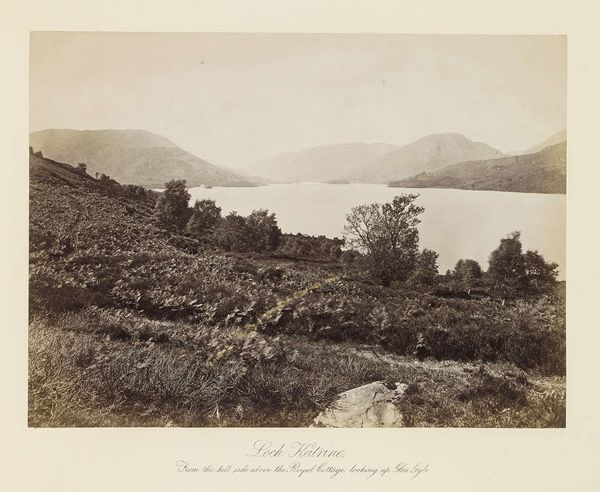
Dimensions: image/sheet: 22.2 × 25.6 cm (8 3/4 × 10 1/16 in.)
Copyright: National Gallery of Art: CC0 1.0
Curator: This is "Windermere," an albumen print made by Roger Fenton around 1850. The composition features a serene landscape, almost meditative. Editor: Yes, immediately I feel this muted serenity. The soft, hazy tones almost give it the quality of a dream. But the branch intruding at the top—what is that about? Curator: That's interesting. Fenton was one of the first to make landscape photographs en plein air, a common practice in painting. We see this branch and these other details because he wasn’t just staging a scene—this image is more closely tethered to the natural world. His patron class valued their English estates; thus, scenes like these had high cultural capital at the time. Editor: Right, and this landscape genre itself evokes a symbolic journey. Lakes and mountains frequently represented enlightenment and spiritual quests. Look how the lake leads the eye, promising escape and reflection, but then...it's also framed by this sort of visual "gate" of foliage. Do you think it has an effect on a contemporary audience? Curator: I believe so. Early photography occupied an interesting position. While it was perceived as an objective medium, subjects such as this picturesque vista are framed to emphasize harmony. The composition, including this rather imposing foliage in the upper left corner, feels intentional, echoing romantic painters like Turner or Constable. Editor: The Romantic painters used landscapes to evoke specific feelings, to connect to deeper truths through nature. Does the tonal range here have any affect on these feelings? Curator: For certain, and keep in mind that these early photographic processes often yielded images with limited tonal range and contrast compared to what we are accustomed to now, influencing their interpretation and the market for art. Editor: All the more impressive, then, that Fenton was able to create such depth and such evocative detail. I look at it now, this isn’t just a photograph—it is a portal. Curator: Exactly. Fenton’s "Windermere" functions as a powerful reminder of how landscape, whether painted or photographed, operates both as a mirror reflecting cultural values, and also as a window. Editor: Nicely said. So the lake as mirror *and* window...I see why this piece continues to resonate today.
Comments
No comments
Be the first to comment and join the conversation on the ultimate creative platform.
